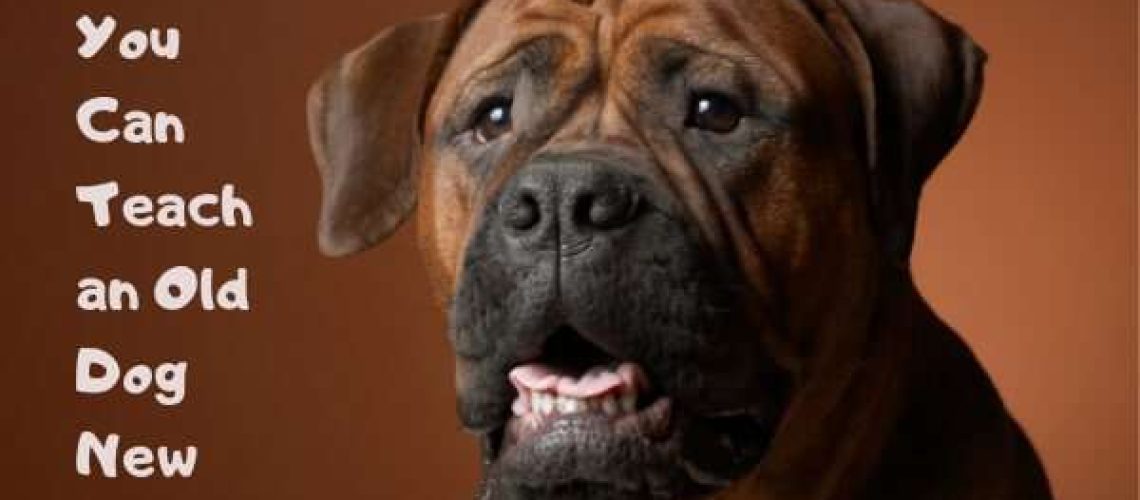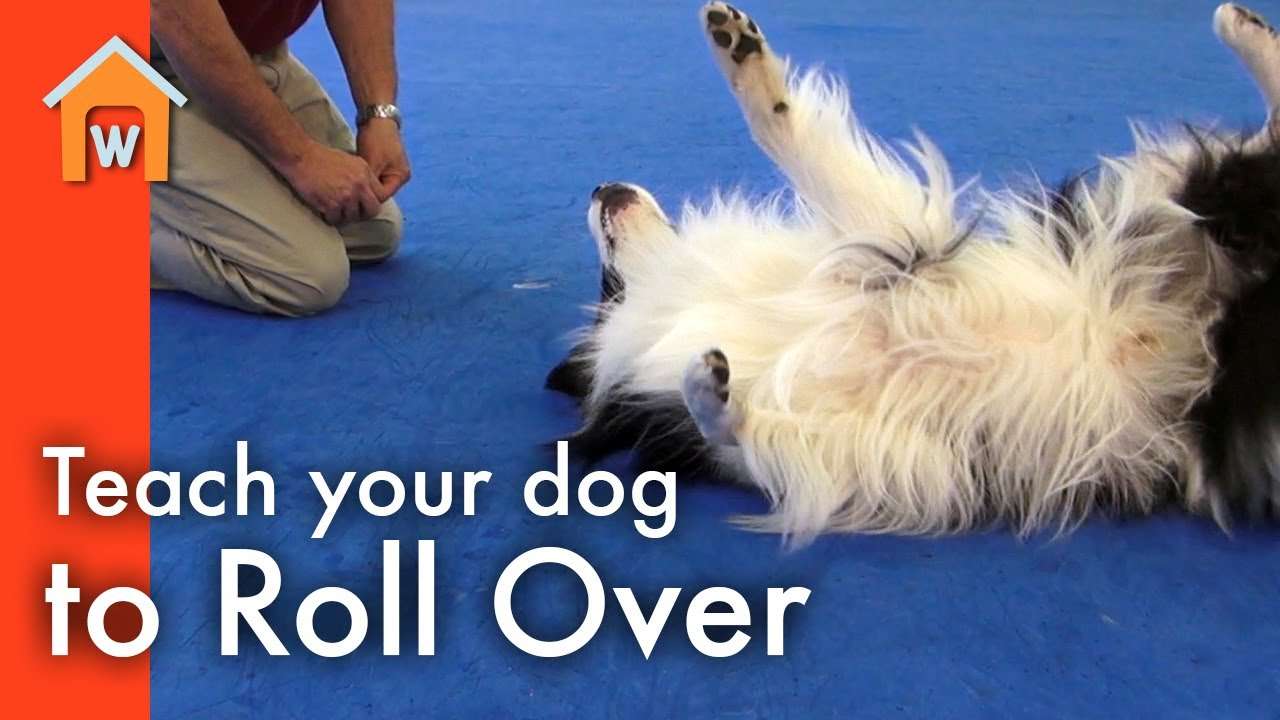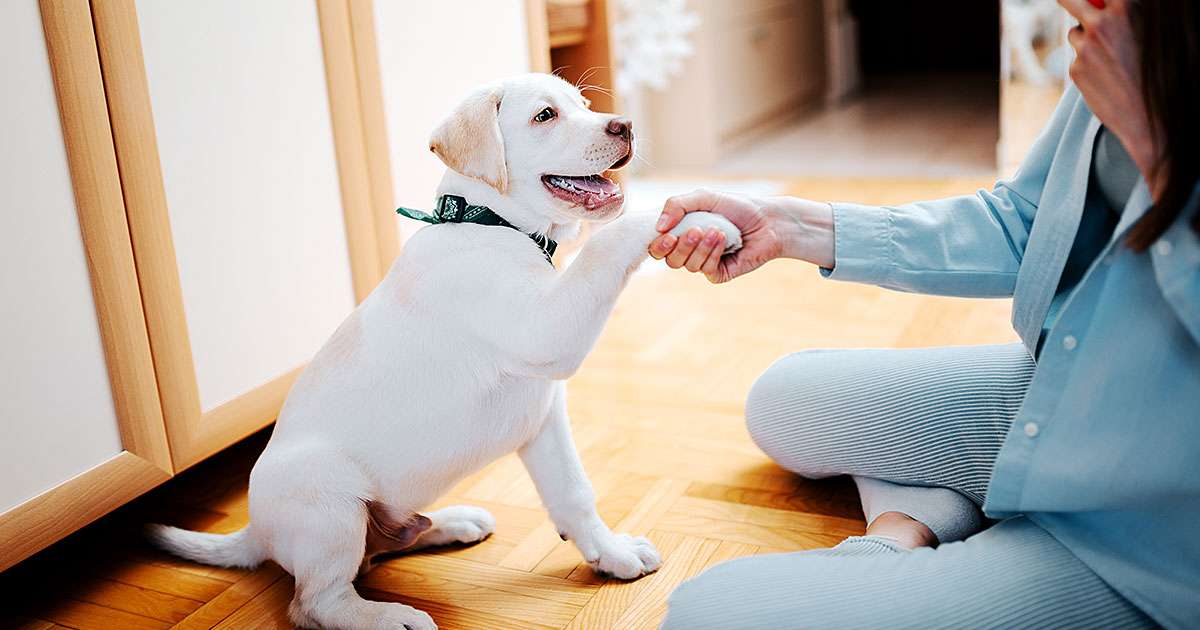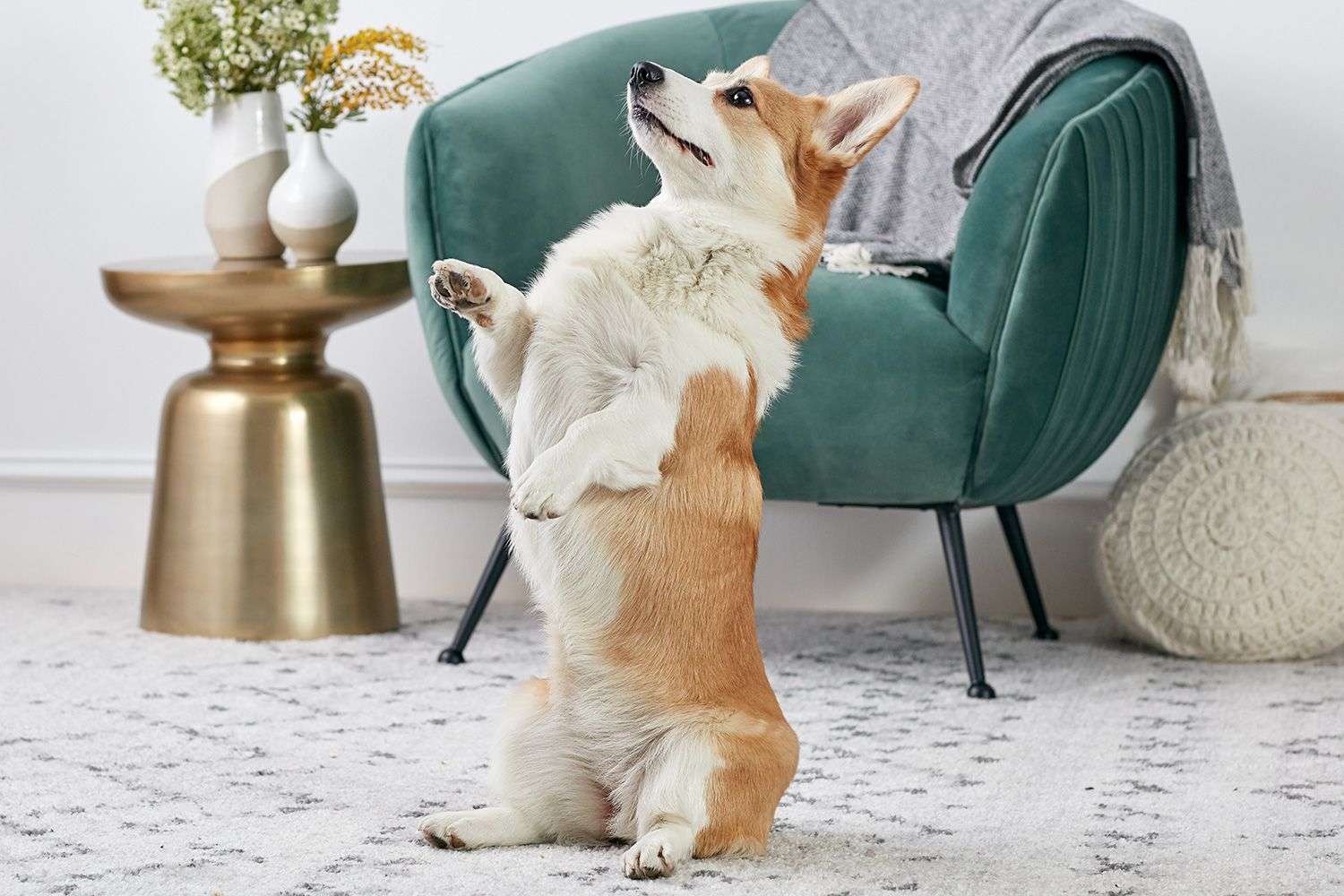Key Takeaways:
- Consistency is key: Older dogs may take longer to learn new tricks, so it's important to be patient and consistent with training sessions.
- Use positive reinforcement: Rewarding your older dog with treats, praise, and affection will motivate them to learn and perform new tricks.
- Start with basic commands: Begin by reinforcing basic commands that your older dog already knows, such as sit or stay, before moving on to more complex tricks.
- Break down the trick into smaller steps: Older dogs may find it easier to learn new tricks if they are broken down into smaller, more manageable steps. Gradually increase the difficulty as they progress.
- Keep training sessions short and frequent: Older dogs can tire easily, so keep training sessions brief but frequent to maintain their focus and prevent frustration.
Are you the proud owner of a wise, older dog who seems set in their ways? Do you long to see your furry friend learn new tricks and impress everyone at the park? Well, you're in luck! In this guide, we will uncover the secrets to training an older dog to do new tricks, unlocking a world of excitement and mental stimulation for both you and your four-legged companion. Not only will this open up a whole new level of bonding between you and your dog, but it will also provide numerous benefits for their overall well-being. So, get ready to embark on an adventure that will not only challenge your dog's mind but also bring endless joy into both of your lives. Get ready to witness the incredible transformation as your older dog learns new tricks like a puppy once again!
Why is it important to teach an older dog new tricks?
Teaching an older dog new tricks is important for several reasons. Firstly, it helps to keep their minds active and engaged, preventing boredom and potential behavior problems. Just like humans, dogs need mental stimulation to stay happy and healthy. Learning new tricks challenges their brains and provides them with a sense of accomplishment.
Secondly, teaching an older dog new tricks can strengthen the bond between the dog and their owner. Training sessions provide an opportunity for quality one-on-one time, where the dog can focus on their owner's commands and receive praise and rewards for their efforts. This positive interaction builds trust and deepens the connection between the dog and their owner.
Lastly, teaching an older dog new tricks can be beneficial in practical ways. For example, teaching them to fetch or bring specific items can help with household chores or make daily activities easier. It also enhances their overall obedience, making them more well-behaved in various situations.
Benefits of teaching an older dog new tricks:
- Mental stimulation
- Bonding with the owner
- Practical applications
Example Trick: Shake Hands
A simple trick that can be taught to an older dog is "shake hands." This involves getting your dog to lift their paw when you offer your hand. Start by holding a treat in your closed hand near your dog's nose. When they show interest in the treat by sniffing or pawing at your hand, say "shake" and open your hand slightly so they can touch it with their paw.
When they lift their paw even slightly, immediately praise them and give them the treat as a reward. Repeat this process several times, gradually requiring them to lift their paw higher before receiving the treat. With consistent practice, your older dog will learn to associate the command "shake" with lifting their paw and will do it without the need for a treat every time.
Remember to be patient and keep training sessions short and positive. Older dogs may take longer to learn new tricks, but with persistence and encouragement, they can still achieve great results.
Common challenges when training an older dog
Lack of physical stamina and flexibility
Older dogs may struggle with physical stamina and flexibility, making it challenging for them to keep up with training sessions. They may tire more quickly and find it difficult to perform certain movements or exercises. It's important to consider their limitations and adjust the training accordingly, incorporating shorter sessions and exercises that are easier on their joints.
Previous conditioning or bad habits
Another common challenge when training an older dog is dealing with previous conditioning or bad habits they may have developed over the years. For example, if a dog has been allowed to jump on people in the past, breaking this habit can be more difficult compared to teaching a young puppy not to do it. Patience and consistency are key in retraining older dogs and replacing unwanted behaviors with desired ones.
Reduced hearing or vision
As dogs age, they may experience a decline in their hearing or vision abilities. This can make it harder for them to understand verbal cues or see visual signals during training. Using hand signals along with verbal commands can help overcome these challenges. Additionally, providing clear visual aids such as brightly colored targets or markers can assist older dogs in understanding what is expected of them.
Tips for overcoming these challenges:
- Keep training sessions short and frequent to accommodate their reduced stamina.
- Use positive reinforcement techniques such as treats, praise, and rewards to motivate your older dog.
- Break down complex tricks into smaller steps that are easier for them to grasp.
- Be patient and understanding, allowing extra time for your older dog to process information.
- Adapt the training environment by reducing distractions and ensuring good lighting for better visibility.
Overall, while there may be some challenges when training an older dog, with the right approach and understanding of their limitations, it is possible to teach them new tricks and behaviors.
Ways to motivate an older dog to learn new tricks
Use high-value rewards
One effective way to motivate an older dog to learn new tricks is by using high-value rewards. These can be special treats that they absolutely love or even their favorite toy. By associating these rewards with successfully performing the desired behavior, your older dog will be more motivated to engage in the training process.
Make it a positive and fun experience
Older dogs, just like humans, enjoy activities that are enjoyable and fun. Incorporate playfulness into the training sessions by using toys or incorporating games. This will not only make the learning process more enjoyable for your dog but also strengthen the bond between you and your furry friend.
Break down tricks into manageable steps
Complex tricks can be overwhelming for older dogs, so breaking them down into smaller, manageable steps is crucial. By gradually introducing each step and rewarding your dog's progress along the way, you'll keep them motivated and engaged in the learning process.
Tips for motivating an older dog:
- Use a happy tone of voice during training sessions.
- Keep training sessions short and frequent to maintain their interest.
- Vary the training routine to prevent boredom.
- Celebrate small victories with praise and rewards.
- Be patient and understanding if progress is slow.
Remember, every dog is unique, so it's important to find what motivates your older dog specifically. Experiment with different rewards and techniques until you discover what works best for them.
Simple and effective tricks for older dogs
Sit
Teaching an older dog how to sit is a simple yet effective trick that can be easily learned. Start by holding a treat close to their nose while slowly moving it upwards. As their head follows the treat, their bottom will naturally lower into a sitting position. Once they are in the sitting position, give them the treat and praise them.
Paw shake
The paw shake trick is another simple and adorable trick that older dogs can learn. Begin by holding a treat in your closed fist and presenting it to your dog. When they show interest by sniffing or pawing at your hand, open your hand and say "shake" while gently lifting their paw with your other hand. Reward them with the treat and praise when they offer their paw.
Stay
Teaching an older dog to stay can be beneficial for their safety and obedience. Start by giving the command "stay" while holding up your palm towards them. Take a step back, and if they remain in place, reward them with a treat and praise. Gradually increase the distance and duration of the stay as they become more comfortable with the command.
Tips for teaching tricks to older dogs:
- Use positive reinforcement techniques such as treats, praise, or petting.
- Keep training sessions short to prevent fatigue.
- Be consistent with commands and rewards.
- Practice in a quiet environment initially to minimize distractions.
- Celebrate each successful attempt to keep motivation high.
Remember that older dogs may take longer to learn new tricks compared to younger ones, so patience is key. With consistent practice and positive reinforcement, you'll be amazed at what your older dog can achieve!
Approaching training sessions with an older dog
Establish a routine
Creating a consistent training routine is essential when working with an older dog. Set aside specific times each day for training sessions, ensuring that they are not too long or physically demanding for your furry friend. By establishing a routine, your dog will come to anticipate and look forward to these sessions.
Start with basic commands
When beginning training sessions with an older dog, it's best to start with basic commands they may already be familiar with. This helps build their confidence and reinforces their understanding of obedience. Commands such as "sit," "stay," and "come" are great starting points before progressing to more complex tricks.
Use positive reinforcement
Positive reinforcement is a highly effective technique when training older dogs. Rewarding desired behaviors with treats, praise, or playtime motivates them to continue learning and obeying commands. Avoid using punishment or negative reinforcement methods, as they can cause fear or confusion in older dogs.
Tips for approaching training sessions:
- Choose a quiet and comfortable area for training to minimize distractions.
- Keep training sessions short and enjoyable.
- Use clear and consistent verbal cues along with hand signals.
- Be patient and understanding if your dog needs extra time to process information.
- End each session on a positive note, even if progress is slow.
Remember that every dog learns at their own pace, so it's important to be patient and adapt the training approach based on your dog's individual needs.
Effective techniques for training older dogs
Clicker training
Clicker training is a popular technique that can be highly effective for older dogs. It involves using a clicker device that makes a distinct sound when pressed, followed by an immediate reward. By associating the sound of the clicker with positive reinforcement, you can communicate specific behaviors you want your dog to repeat.
Target training
Target training involves teaching your older dog to touch a specific object, such as a target stick or your hand, with their nose or paw. This technique allows you to guide them into performing various tricks or behaviors by directing their attention and movement. Target training can be particularly useful for teaching more complex tricks or shaping desired behaviors.
Capture and reward good behavior
Instead of solely focusing on teaching specific commands, capturing and rewarding good behavior can be an effective technique for older dogs. Whenever your dog naturally exhibits a desired behavior, such as sitting calmly or offering a paw, immediately reward them with praise and treats. This reinforces the behavior and encourages them to repeat it in the future.
Tips for effective training techniques:
- Keep training sessions short and frequent.
- Use high-value rewards to motivate your older dog.
- Break down complex tricks into smaller steps.
- Be consistent with your training approach.
- Adapt techniques based on your dog's individual needs and abilities.
By utilizing these effective training techniques, you can help your older dog learn new tricks and behaviors while strengthening the bond between you both.
How long does it take for an older dog to learn a new trick?
The time it takes for an older dog to learn a new trick can vary depending on various factors, including their previous training experience, temperament, and physical condition. While some older dogs may quickly grasp new tricks within a few sessions, others may require more time and repetition.
It's important to approach the training process with patience and understanding. Older dogs may have physical limitations or cognitive changes that affect their learning ability. Therefore, it's crucial to adapt the training sessions accordingly by keeping them shorter, providing clear cues, using positive reinforcement, and allowing extra time for them to process information.
The key is consistency and repetition. By consistently practicing the desired trick or behavior in short but frequent sessions, your older dog will gradually build muscle memory and understand what is expected of them. Celebrate small victories along the way to keep motivation high.
Remember that every dog is unique, so there is no set timeframe for learning a new trick. The most important thing is to focus on the progress your older dog makes and celebrate their achievements, no matter how long it takes. With patience, dedication, and positive reinforcement, you'll be amazed at what your older dog can accomplish!
In conclusion, training an older dog to do new tricks may take more time and patience, but it is definitely possible. By using positive reinforcement and breaking down the trick into smaller steps, you can help your furry friend learn new tricks and have fun together.
How long does it take to teach an old dog a new trick?
Keep in mind that dog training requires dedication and consistency. It is possible to teach an older dog new tricks, but it will take time and cannot be accomplished overnight. Studies suggest that it may take up to four weeks for an older dog to learn new skills, so patience is crucial.
Why is it harder to teach an old dog new tricks?
According to The Australian, researchers have discovered that the level of focus exhibited by dogs varies as they age. While younger dogs tend to be curious about everything, older dogs show less interest in new objects and lose interest more quickly. This finding was reported on April 3, 2014.
Is it too late to teach my dog tricks?
Despite what people commonly believe, it is never too late to teach an old dog new tricks. Although younger dogs may learn at a faster pace, older dogs are just as capable of learning new behaviors. In fact, their life experience and better understanding of their surroundings give them an advantage in picking up new skills.
What you can't teach an old dog to do?
The idiom "You can't teach an old dog new tricks" means that it is extremely challenging, if not impossible, to change someone's habits or ways of doing things when they have been doing them the same way for a long time.
Can you teach a 10 year old dog tricks?
Contrary to popular belief, it is a common misconception that elderly dogs are unable to learn new things. However, this is not true as old dogs are capable of acquiring new skills. Dogs are naturally curious and have a strong desire to gain new knowledge and experiences.
What is the first trick to teach a dog?
Begin the training process by teaching your dog how to shake paws. By using the same motion that your dog uses to shake hands, you can train it to raise its paw to wave. This trick is not only attention-grabbing but also incredibly adorable to observe.

















